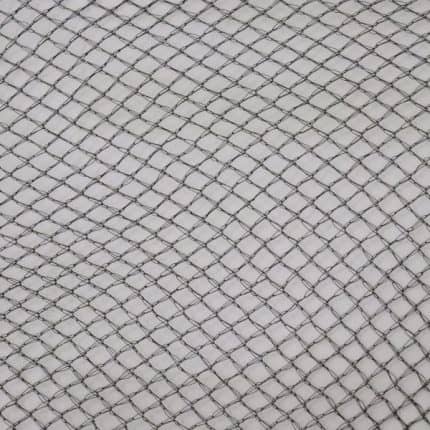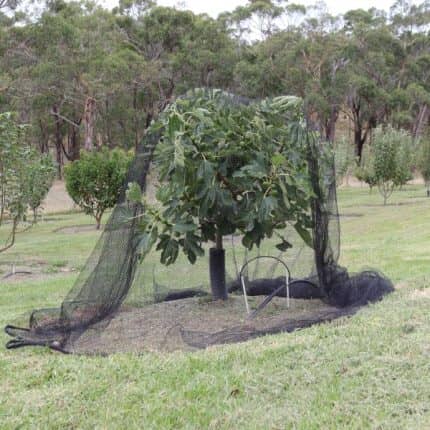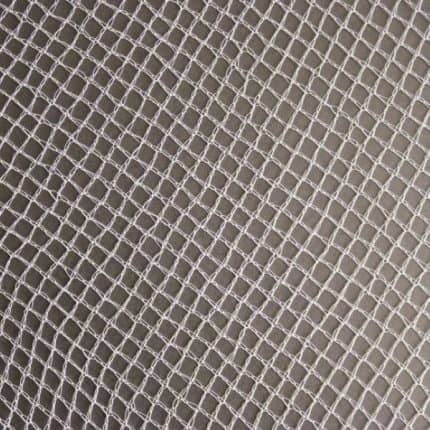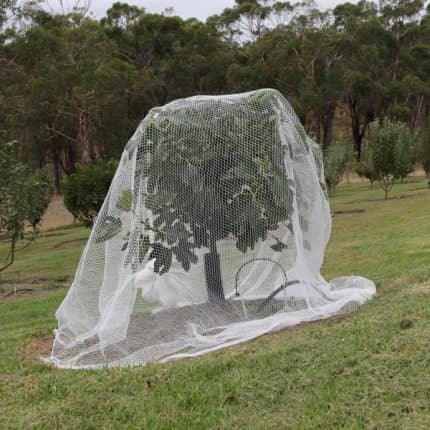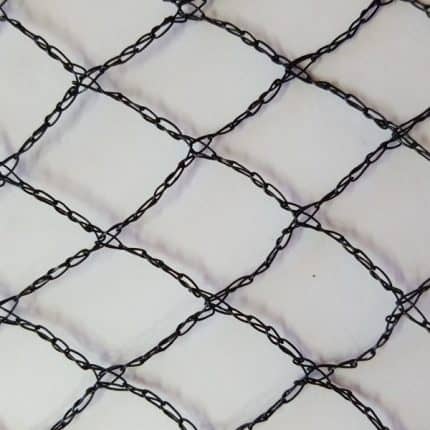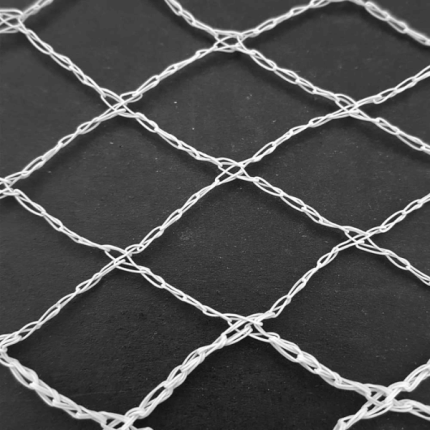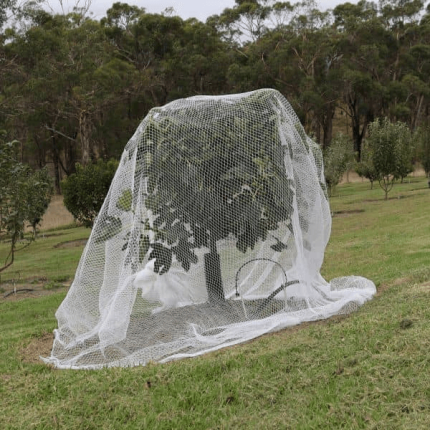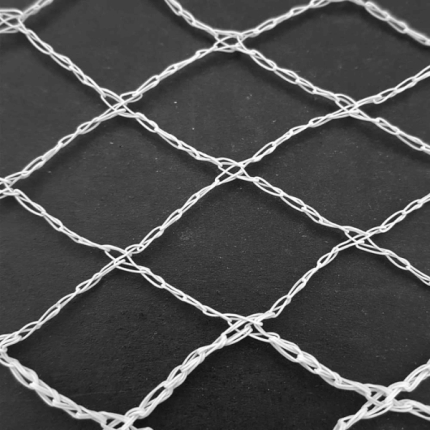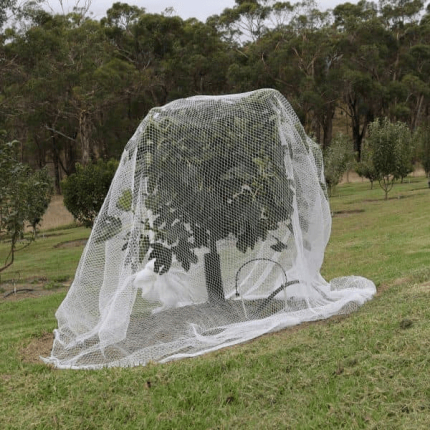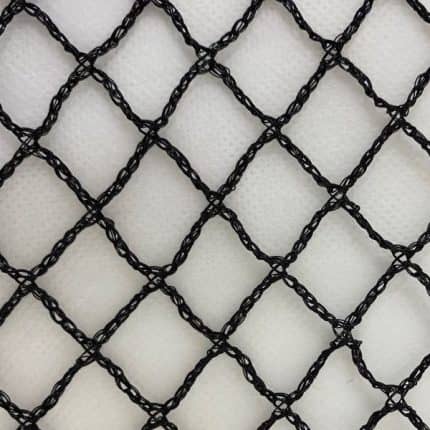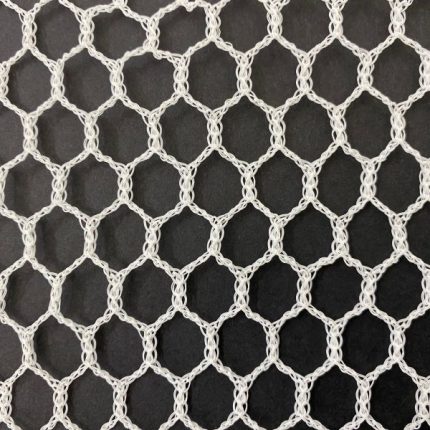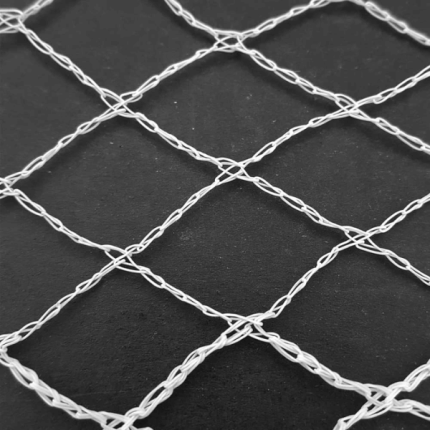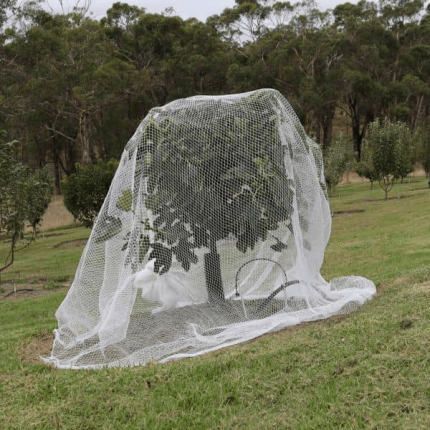Bird Netting For Garden & Fruit Trees Heavy Duty
Bird netting, or anti-bird netting, is used to protect crops and fruit trees from birds. They can also be used to protect buildings or structures. It acts as a barrier, ensuring that birds don’t land or enter the area to create damage without harming the birds.
Anti Bird Netting
It’s a simple way to create a safe zone for your crops and property without causing any harm to our feathered friends. In both urban and agricultural landscapes, our bird netting is a versatile defender, offering grades ranging from lightweight extruded netting to heavy-duty structural bird netting.
Bird netting is widely used in the horticultural and agriculture industries to protect produce from birds. They are commonly used to protect fruit trees, vineyards, crops and other valuable agricultural produce. Using bird netting you may prevent Pigeons, Starlings, Sparrows, Crows, Seagulls, Blackbirds, Robins, Finches, Thrushes, and Magpies from entering your crops.
Bird Netting for Garden
Whether you are a commercial or domestic grower, you know the hard work you have put in to plant and nurture your fruits and veggies and you need to protect them against birds and that’s when bird netting for the garden comes in.
This ensures that your fruits and vegetables remain intact and can mature fully, leading to a strong harvest season. With bird netting, you can rest easy knowing that your hard work will not go to waste, and your garden will flourish under your careful watch.
Note: We also have shade cloths for plants, highly essential during summer.
Bird Netting for Fruit Trees
Birds are highly attracted to ripe fruits such as strawberries, blueberries, and other fruit varieties like apples, peaches, and cherries. Without proper protection, your fruit harvest may be significantly diminished. The best bird netting for fruit trees ensures that your fruits are safeguarded from these persistent pests.
Using high-quality bird netting, you can cover your fruit trees and berry bushes, creating a physical barrier that keeps birds from accessing the fruit. Select the right colour of bird netting, such as white or black, to make it visible from a distance, reducing the likelihood that birds will attempt to enter the barrier. With proper bird netting in place, you can enjoy a full, healthy harvest of strawberries, blueberries, and other fruits.
Heavy-Duty Bird Netting
Don’t settle with cheap bird netting as it may not serve the purpose and you may need to replace it very soon again.
Our bird nettings at Sage Horticultural are strong and durable and are designed to last if used properly.
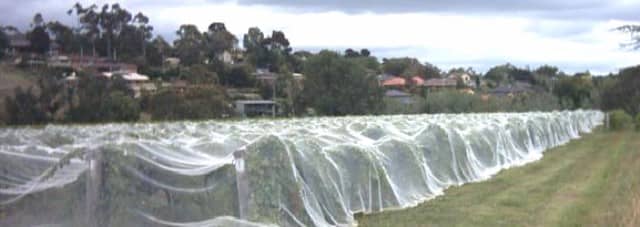
They are made from high-quality materials that withstand harsh weather conditions and resist wear and tear, ensuring your crops remain safe throughout the growing season. The strong, durable design effectively deters birds and other pests, preventing them from damaging your fruits, vegetables, and other plants.
Investing in heavy-duty bird netting means fewer replacements and more reliable protection for your garden. Trust Sage Horticultural for netting solutions that stand the test of time and keep your garden flourishing.
Bird Netting Colour Choices
Choose from our selection of Anti Bird Netting in either black or white at Sage Horticultural.
Black Bird Netting
Shield your crops with our dependable Black Bird Netting, ensuring a bountiful harvest and sustained plant health. The discreet black mesh protects without obstructing your view.
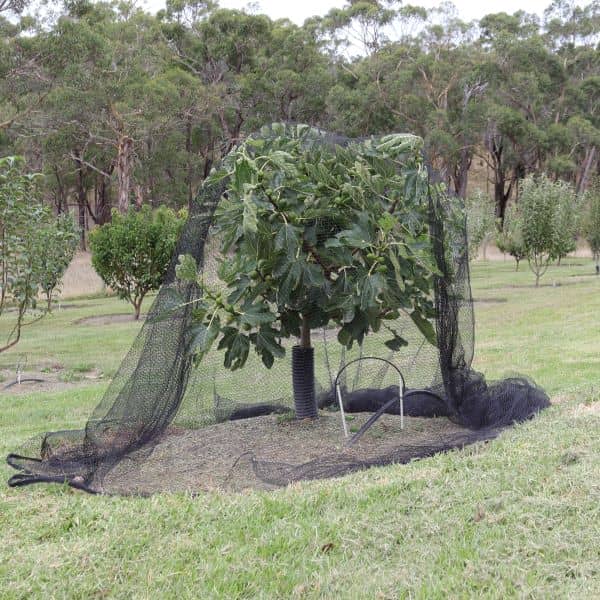
White Bird Netting
White Bird Mesh, deters birds while allowing sunlight to nurture your plants. Both options, UV-stabilized and durable, promise long-lasting protection for your investments. Whether it’s a small garden or an extensive agricultural area, our black and white bird mesh offers reliable and versatile protection.
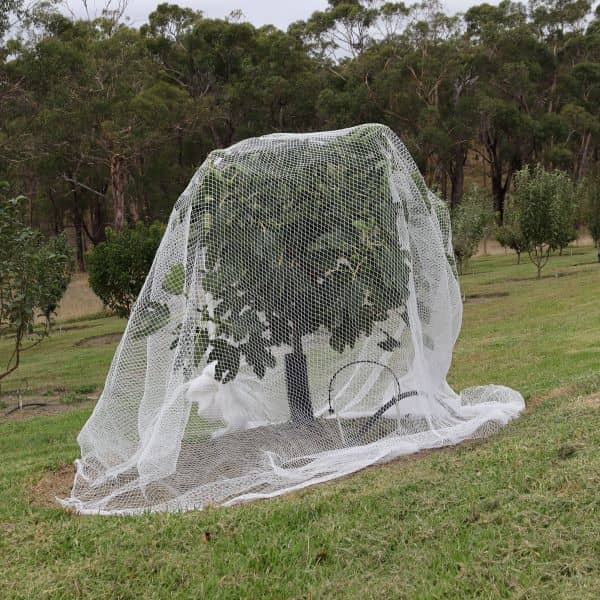
Why Choose Sage Horticultural?
Sage Horticultural, in operation since 1965, specialises in top-quality greenhouse and horticultural products. Elevate your greenhouse protection with our premium Anti Bird Netting designed for Australian conditions.
We offer bird netting for both domestic and commercial customers. Here are some reasons to buy bird netting from Sage Horticultural.
- UV stabilised
- Made high-density polyethylene monofilament
- Resists tearing and fraying during installation and removal
- Different mesh sizes are available
- You can buy by metre or roll
Wildlife Friendly Bird Net
Sage Horticultural carry a range of Wildlife Friendly Anti Bird Netting, that complies with Victorian domestic laws. Suitable for Victorian domestic use please see more information.
Anti Bird Netting Cut To Length
At Sage Horticultural, we understand that every garden, orchard, or vineyard has unique needs. That’s why we offer Anti Bird Netting that can be cut to your desired length, ensuring you get exactly what you need.
Whether you’re looking to protect a small vegetable patch or a large-scale fruit orchard, our customisable bird netting solutions are here to help.
Bird Netting By By Roll
For larger gardening or agricultural projects, Sage Horticultural offers Anti Bird Netting by Roll to provide extensive coverage at a great value. Ideal for commercial growers to meet your needs for bird netting in a much higher length.
With a variety of sizes available, you can easily find the right roll to meet your needs. Secure your garden or orchard with reliable, high-quality bird netting from Sage Horticultural today!
Wildlife Friendly Brid Netting
At Sage Horticultural, we offer Wildlife Friendly Bird Netting designed to protect your crops while ensuring the safety of local wildlife. In line with Victorian regulations, our netting features a fine mesh that prevents entanglement of birds and other animals, offering a humane and environmentally conscious solution for your garden.
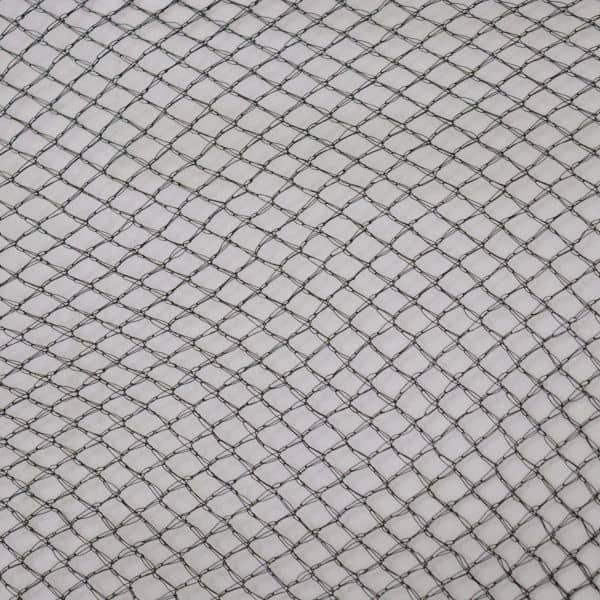
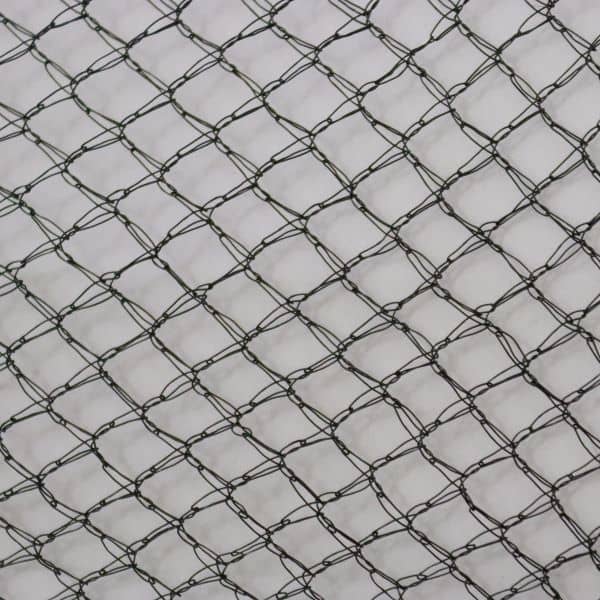
This netting not only complies with legal standards but also provides effective protection for your fruit trees, vegetables, and plants from bird damage. Choose Sage Horticultural for a responsible and effective approach to crop protection that supports biodiversity and adheres to Victorian wildlife guidelines.
